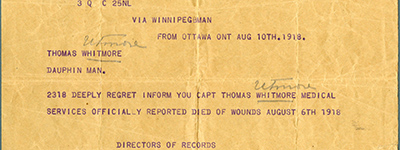CANADA HISTORY - DOCUMENTS FRONTIER
1883 The Globe Toronto On the CPR
Analysis of the Document - (The Document follows below the Analysis)
In 1883, The Globe of Toronto published a significant editorial on the Canadian Pacific Railway (CPR), capturing the national importance of this ambitious project. The CPR represented not only a monumental engineering feat but also a vital component of Canada's strategy for unifying its vast geography and fostering economic growth. The editorial echoed John A. Macdonald’s National Policy by recognizing the railway’s potential to connect Eastern and Western Canada, encouraging settlement in the prairies, facilitating trade, and asserting Canadian sovereignty over the western territories.
The CPR was the lifeline that would link the new Dominion from coast to coast. It was a response to the pressures of territorial expansion, the need to populate the West, and the desire to stave off potential American encroachment. The Globe framed the railway as an emblem of national progress, a statement of Canada’s determination to grow not only as an economic entity but also as a cohesive nation, overcoming its geographical vastness through industrial and infrastructure advancements.
However, the newspaper did not shy away from acknowledging the immense challenges the project posed. The massive financial investments required, the treacherous and unyielding landscapes it crossed—including the formidable Rocky Mountains—and the political controversies that surrounded its development were all part of the national discourse. The CPR had already been the center of a political scandal, the Pacific Scandal of 1873, which led to the resignation of Macdonald’s government. Yet, the project continued to be seen as indispensable for Canada's future.
In terms of its long-term implications, the CPR would forever alter Canada’s economic and political landscape. It spurred the rapid development of Western Canada, enabling agriculture and resource extraction in previously inaccessible regions, while also integrating these areas into the national economy. Cities such as Winnipeg, Calgary, and Vancouver began to flourish as key stops along the railway. The railway also carried waves of immigrants, fundamentally reshaping the demographic and cultural fabric of the West.
Moreover, the CPR solidified Canada’s political sovereignty. By constructing a transcontinental railway, Canada effectively asserted control over its western territories, thereby reducing the likelihood of American annexation attempts. The railway's completion in 1885 was celebrated as a triumph of Canadian resolve, symbolized by the driving of the Last Spike at Craigellachie, British Columbia.
Yet, the CPR’s legacy was not without its darker chapters. Indigenous peoples across the West were displaced from their lands to make way for the railway and the settlements it facilitated. The government’s policies, driven by the desire to populate the West with European settlers, often resulted in broken treaties, the loss of traditional territories, and long-lasting social and economic challenges for Indigenous communities.
In conclusion, The Globe’s coverage of the Canadian Pacific Railway in 1883 reflected both the hope and the complexities of the project. The CPR was a national enterprise of immense ambition, a physical and symbolic representation of Canada’s effort to unify its vast territory and assert its independence. While it brought economic growth and national integration, the CPR also laid bare the challenges of balancing national development with the interests of marginalized communities, a tension that continues to resonate in Canadian history.

A CONSEQUENCE OF THE DIVERSION OF THE C.P.R.
As already announced, the Canadian Pacific Company has declined to receive more than 5,000,000 acres out of the 11,000,000 in the odd-numbered sections in the forty mile belt between Winnipeg and Fort Calgary; and the fact of this declination has received all the publicity which a Government return can give it.
This is a most unfortunate occurrence for the country, and all the damage that will ensue from it is the direct consequence of the gross blunder made by the Dominion Government two years ago when the southern diversion of the main line was sanctioned. Mr. Mackenzie's Government made a thorough exploration of the country. The result of years of careful investigation by the best engineering talent was that a route recommended by Sandford Fleming, north of the present main line, was adopted. This route traversed the greatest possible quantity of our most fertile land. For purposes which are only now unfolding themselves, the C.P. Company chose to throw away all the results of Mr. Fleming's laborious explorations. Instead of taking their line through the best of the Fertile Belt, they brought it as far south as they could. Instead of taking the Yellowhead Pass, they aimed for the Kicking Horse, through which it is absolutely certain no such first-class line as that projected by Mr. Fleming can be driven. The present Government, as if in duty bound, assented to this diversion -- and what are the consequences?
The first of the consequences is to be recognized in the Company's refusing to accept one-half of the land in the railway belt. The next is, that in order to make up for the deficiency thus created the Company has gobbled up every odd-numbered section in the southern part of the old Province of Manitoba, and in the best south of the railway and west of Manitoba. It has become inevitable that whatever other tract the Company asks for must be given to it. The object of the Company will of course be to locate as much of its land as possible in the eastern part of the North- West. From present appearances, nearly twenty millions of the twenty-five millions of acres will be thus located.
Worse than everything else is the fact that the Company's public refusal to take more than 5,000,000 acres along the main line goes forth to the world as a serious and unnecessary hindrance to all efforts for the promotion of settlement. Intending immigrants will surely put the worst construction possible on the matter. It will be impossible to explain to their satisfaction the objects of the Canadian Pacific Company in locating its main line through an inferior section instead of through the best land. They will certainly fail to recognize that the Canadian Pacific was extremely anxious to get its line far to the southward in order that no competitor could come between it and the frontier.
Cite Article : www.canadahistory.com/sections/documents
Source:Globe, March 3, 1883



